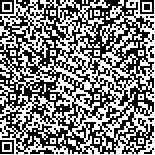| 摘要: |
| [摘要] 目的 比较鼻内给予右美托咪定与静脉注射咪达唑仑在患儿CT检查中镇静的有效性和安全性。方法 选择接受CT检查需实施镇静的患儿60例(ASA Ⅰ~Ⅱ级,年龄2~7岁),将患儿随机分为咪达唑仑组(M组)和右美托咪定组(D组),每组30例。于CT检查前M组患儿静脉注射咪达唑仑0.2 mg/kg,D组患儿鼻内给予右美托咪定2 μg/kg。比较两组患儿给药后起效时间、检查时间、苏醒时间、镇静疗效及不良反应。结果 与M组患儿比较,D组患儿苏醒时间短(P<0.05),舌后坠、烦躁及呼吸抑制等不良反应发生率明显降低(P<0.05)。两组患儿给药后起效时间、检查时间、镇静疗效比较差异无统计学意义(P>0.05)。结论 鼻内给予右美托咪定与静脉注射咪达唑仑均可在患儿CT检查镇静中有效应用,鼻内给予右美托咪定患儿苏醒时间短,不良反应少,更适合临床应用。 |
| 关键词: 右美托咪定 咪达唑仑 镇静 |
| DOI:10.3969/j.issn.1674-3806.2018.12.21 |
| 分类号:R 971 |
| 基金项目: |
|
| Comparison of sedative effect between intranasal dexmedetomidine and intravenous midazolam on child patients examined with CT |
|
MIN Yu-yi, LIN Jing, HE Qing-biao
|
|
Department of Pediatrics, the Eighth People′s Hospital of Guangzhou City, Guangdong 510000, China
|
| Abstract: |
| [Abstract] Objective To compare the sedative effect between intranasal dexmedetomidine and intravenous midazolam on child patients examined with computed tomography(CT). Methods Sixty children with AsA physical status Ⅰ or Ⅱ scheduled for CT imaging were randomly divided into two groups: midazolam group(group M, n=30) and dexmedetomidine group(group D, n=30). Group M received intravenous midazolam 0.2 mg/kg, and groups D received intravenous intranasal dexmedetomidine 2 μg/kg. The onset time of sedation, the length of examination, the awakening time, the sedative effect and adverse reaction were compared between the two groups. Results Compared with those in group M, the awakening time was significantly shorter(P<0.05) and the adverse reaction(including glossocoma, dysphoria and respiratory depression) rate was significantly lower in group D(P<0.05). There were no significant differences between the two groups in the onset time of sedation, the length of examination and the sedative effect(P>0.05). Conclusion Both intranasal dexmedetomidine and intravenous midazolam can be used effectively and safely for pediatric CT sedation. The awakening time is shorter and the adverse reaction rate is lower in the child patients using intranasal dexmedetomidine than those in the child patients using intravenous midazolam for sedation when receiving CT examination. |
| Key words: Dexmedetomidine Midazolam Sedation |

